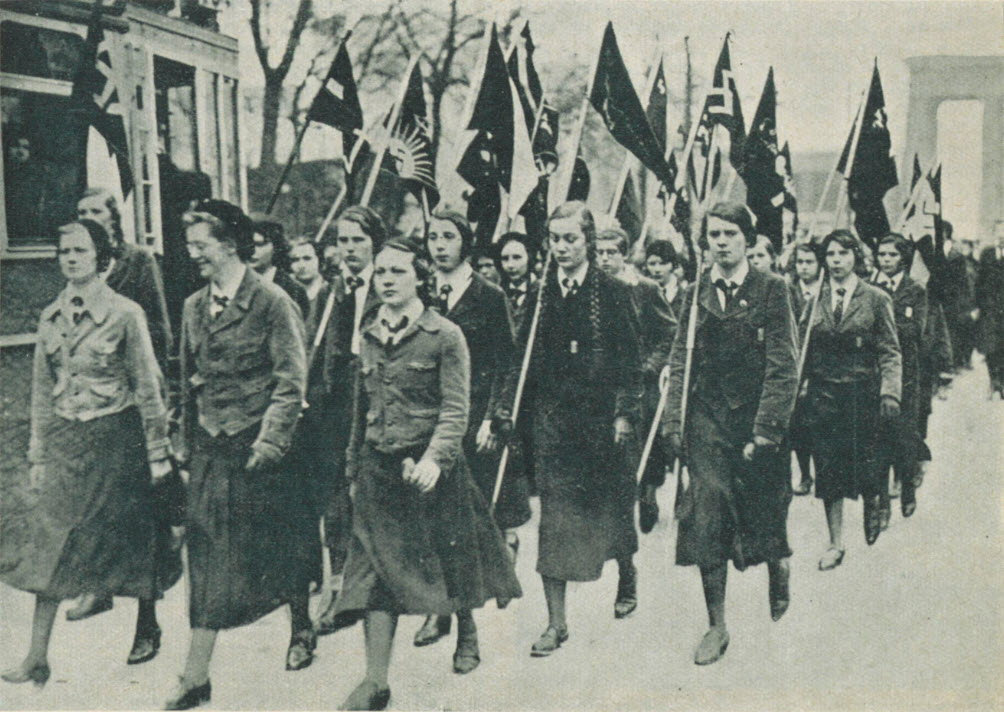10.1.2 Mass Mobilization
Gregory Millard
So what does a fascist “national rebirth” look like? First, it involves mass mobilization. This differentiates fascism from straightforward authoritarian dictatorship. This usually seeks a demobilized citizenry that leaves the government alone to wield power as it pleases (Paxton, 2005, p. 217). But fascist parties energetically recruited and mobilized the citizenry, drawing in large memberships and gradually supplanting the personnel of established institutions, bringing “a new elite to power as representative of a mobilized people” (Passmore, 2002, p. 76). In Nazi Germany, “the civil service was purged, and the institutions of the [Nazi] Party and the SS became a sort of parallel administration, the personnel of which was recruited on the basis of ideology and service to the Party, rather than the established procedures” (Passmore, 2002, p. 68). Nazi-approved trade unions supplanted the more established socialist-inspired ones, which were smashed, their leaders killed. Factory groups and youth clubs, such as Hitler Youth and the League of German Girls, mobilized millions, and everything from school syllabi to women’s groups and film societies were made to align with fascist ideology. Mussolini’s government was less thorough in its penetration of social organizations, but it moved in a similar direction (Eatwell, 1996, pp. 63-66) and “never abandoned its desire for control over welfare, education, and leisure – for the mobilized nation” (Passmore, 2002, pp. 57-8). Rallies, marches, and parades served as dramatic exclamation marks for this mass engagement with the project of national rebirth under the banner of a single party and a charismatic leader.

To what ends were this mobilization directed? According to Paxton, fascism “pursues with redemptive violence, and without ethical or legal restraints, goals of internal cleansing and external expansion” (Bosworth, 2009, p. 549, italics added). The “internal cleansing” agenda mobilized mass publics behind goals of national purity, absolute unity, elitism, and corporatist economics. The project of “external expansion” involved mobilization for eternal struggle and war. Each of these principles are unpacked in the following sections.
Media Attributions
- BDM demonstration 1934 © Les Femmes dans l'action mondiale (magazine) is licensed under a CC BY-SA (Attribution ShareAlike) license
engaging and motivating the citizenry, drawing in large memberships and gradually supplanting the personnel of established institutions

